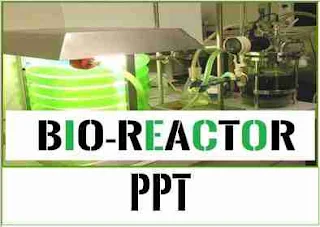Bioreactor PPT
- Bioreactor – can be described as a vessel that has the provision of cell cultivation under sterile conditions & control of environmental conditions e.g., pH, Temperature, Dissolved oxygen, etc.
- It can be used for the cultivation of microbial plant or animal cells.
- This process can either be aerobic or anaerobic.
- The bioreactors are commonly cylindrical, ranging in size from liters to cubic meters, and are often made of stainless steel.
Specifications of a Bioreactor
A typical bioreactor consists of the following parts:
- Agitator – used for the mixing of the contents of the reactor which keeps the “cells” in the perfect homogenous condition for better transport of nutrients and oxygen to the desired product(s).
- Baffle – used to break the vortex formation in the vessel, which is usually highly undesirable as it changes the center of gravity of the system and consumes additional power.
- Sparger – In the aerobic cultivation process, the purpose of the sparger is to supply adequate oxygen to the growing cells.
- Jacket – The jacket provides the annular area for circulation of the constant temperature of the water which keeps the temperature of the bioreactor at a constant value
High productivity, high product yield, and high product concentration are the major objectives of plant tissue process development. A variety of bioreactor types providing growth and expression of bioactive substances are available today for plant cell and tissue cultures. Low biomass and product level can be achieved in any type of bioreactor. However, an improved understanding of the manifold interactions between cultivated cells, product formation, and the specific designs for different bioreactor types will enhance and sustain high productivity and also reduce the process costs.
Click here to Download Bioreactor ppt


0 comments